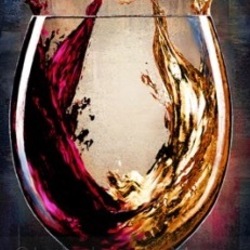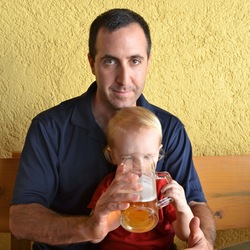Auburn Ale House
Taittinger
Comtes de Champagne Brut Blanc de Blancs Champagne Chardonnay 2007
Well...this was one hell of a week. There is only one way to wind it down. Reach for an excellent bottle of vintage Champagne.
My first thoughts are how delicate this is on the palate. Further, how unbelievable it will be with another 8-10 years in bottle.
The nose shows; slightly sour lemon, the good parts of lemon Pledge, lemon meringue, white stone fruits, pineapple fresh with lots of juice, grapefruit, lime pulp, honeysuckle, soft, haunting caramel, brioche, limestone & slightly, dirty, grey volcanics, saline, sea fossils, sea spray, bread dough, vanilla, white spices-light ginger with spring flowers, mixed floral greens & lilies.
The body is light on its feet and dances on the palate. Delicacy abounds. Its soft, gorgeous mousse right there with the best money can buy. Slightly sour lemon, lemon meringue, green & with more bruised golden apple, white stone fruits, pineapple fresh with lots of juice, grapefruit, lime pulp, touch of apple cider, honeysuckle, soft, haunting caramel, ginger ale into cream soda, brioche, nougat, toffee notes, lighter nuts without skin, limestone & slightly, dirty, grey volcanics, saline, sea fossils, sea spray, bread dough, vanillin, marzipan, white spices-light ginger with spring flowers, mixed floral greens & lilies. The acidity is mellow yet lively, gorgeous and as good as it gets. The finish is all luxury. So well knitted & balanced, elegant, rich but not overpowering and gently persisting several minutes.
Photos of; The House of Taittinger, their caves so chalky white and built on the famous Crayères Cellars of Reims: 2.5 miles of tunnels (they own 1/4 to 1/3 of it) cut out of chalk by the Romans, the portrait of Thibaud IV who was a king, lord, manager, singer, conqueror, explorer & 11th century Crusader all rolled into one from which, this Cuvée was the catalyst creation and part of the 600 plus hectares they own in Champange.
Some producer notes; Taittinger's history can be traced back to 1734, when it was originally known as Forest-Fourneaux, founded by Jacques Fourneaux who worked closely with local Benedictine monks to learn how to produce wine. They were just the 3rd Champange house.
The estate was bought by the Taittingers – a family of wine merchants – in 1932, and thanks to the great depression and subsequent low land prices, the family also picked up huge swathes of vineyard. From 1945-1960, Francois Taittinger established the cellars in the Abbey of Saint-Nicaise, and after his death in 1960 his brother Claude took over, pushing the estate into a Champagne house of world renown. Such was the status of the label that the Taittinger family soon expanded its business into other luxury goods. However, this eventually led to financial difficulties, and in 2005 the Taittinger brand – including the Champagne house – was sold to the American owned Starwood Hotel Group. The sale was badly received by the Champagne industry, with many fearing the new owners – unfamiliar with the culture of Champagne – would put profit ahead of quality.
Just one year later, Claude’s nephew, Pierre-Emmanuel Taittinger, who had always been opposed to the sale, negotiated a €660m deal with the Starwood Group, and the Taittinger family resumed ownership of the company.
In 2017, Taittinger planted its first vines in England, near a village in Kent, for its venture into English sparkling wine. The first bottle will be ready in 2023.
1/8/21 — 4 years ago


Highland Brewing Company
Gaelic Ale 1994
Brasserie Dupont
Saison Dupont
There's a great video on YT on what a Saison is. In short, it's a farmhouse ale (pale or sometimes red) that was historically served to farm workers as a clean source of hydration. Without any distinctive characters and lower in alcohol then, the "Saison" only really gained it's signature when the house in question came into the equation. Also, based on my research, the checkered "Vielle Provision" yellow labels are the export labels.
As it was here, the Dupont Brewery's Saison is generally cloudy, very carbonated via bottle conditioning, zesty and spicy, bitter with a hint of sour, and a dry hoppy finish. For me, this is truly "The beer for all seasons" - the flavours are just so versatile. Perfect for a warm summer afternoon in the park, yet complex enough to pair with a 3-star dish. — 4 years ago
Brasserie de Rochefort
Trappistes Rochefort 10 Quadrupel Ale
All the essentials. Hope these monks blessed the devil out of this! Gorgeous auburn brown that looks as rich as fresh tilled, valley loam. This head don’t quit! Cappuccino foam with variations. Sheeted micro-weave of bubbles in the lacing that part like thick lips, as if to say, ‘ahhh.’ A touch of baked marshmallow-on-yam. Coffee rye, barley grist, malt and grilled meat interplay, twice baked potatoes with bacon, sour cream and chives. Caramel drizzle. Dark honey glazed sourdough toast. Blood orange squeezed onto fondue, baked, mushroom stuffed persimmon. Heady, rustic, decadent nose invites us to a feast. Intense finesse! So multi-layered they had to fold it into the bottle! There is a cognac barrel aspect that has a cedar and oregano intertwined in an aged balsamic depth. Bark-y and chicory but also resembling petite verdot in its unctuous and integral core. Cherrywood and rich, dark maduro tobacco. The list could literally go on forever. The bread of Life. #trappiste #rochefort #trappistesrochefortten #trappistesrochefort10 #belgian #belgianale #belgianbeer #belgianbier #abbeyale #abbayeale #ale #beer #bier #biere #birra #cerveza #cerveja #abbayeaddesaintremy #rochefort #belgium — 5 years ago

New Glarus Brewery
Spotted Cow Cream Ale
Owners Dan and Deb Carey have grown New Glarus Brewery to the 25th largest in America. The flagship brew is Spotted Cow, sold only in Wisconsin . @ delactable cream ale description is incorrect!
The goal was to brew a recipe that farmers would enjoy.
They call it farm house ale, unfiltered and cloudy. Pilsner malt, caramel malt, white wheat, and saaz hops. Hard water comes from the brewerys own deep well .
5.1% abv. — 5 years ago

Bollinger
Special Cuvée Brut Champagne Blend
Congratulations to TB12 on going to his 14th Conference Championship.
The nose shows; more macerated green & golden apple, pineapple than usual. Touch of apple cider, bruised pear, some dried apricots, nougat, melted, salted caramel, alluvial limestone minerals, chalk, sea spray, roasted white spice, dry yeast, rising bread dough, baguette crust, ginger ale with withering lilies and some spring flowers.
The palate has softer mousse & less lively acidity than previous bottles. Still nice but, it’s giving cause to wonder when this bottle was disgorged. Macerated green & golden apple, yellow peach, pineapple juice. Touch of apple cider, bruised pear, some dried apricots, nougat, melted, salted caramel, alluvial limestone minerals, grey volcanics, gritty chalkiness, sea fossils, saline, roasted white spice, nuts, dry yeast, rising bread dough, baguette crust, ginger ale that has the high notes of root beer, vanillin with withering lilies and some spring flowers. The acidity is ok but, seems off a bit. Change in base wine for this bottling? The finish still rich, elegant, well balanced persisting minutes.
Bottle is off slightly from the many others we’ve enjoyed.
Photos of; the House of Bollinger, branded cave with resting bottles, their Cooper making barrels and one of their Grand Cru vineyards.
1/17/21 — 4 years ago
Talon Winery
Wingspan Red 2017
Perfect with our meal at the Ale House! — 5 years ago
Toppling Goliath Brewing Company
King Sue Double India Pale Ale
My wife is the beer nerd in our house, and I don’t approach beer like I do wine. I know that some traditionalist hate on this super trendy, hazy, OJ-looking style, but I like it when done well, and this is the best one I’ve ever had. Juicy, creamy, and delicious. This producer’s stuff is on point. — 5 years ago












William Lee, Jr.
Paired w/oven roasted oysters on the half shell, parmesan-herb butter, house made cocktail sauce, fresh lemon garnish — 2 years ago